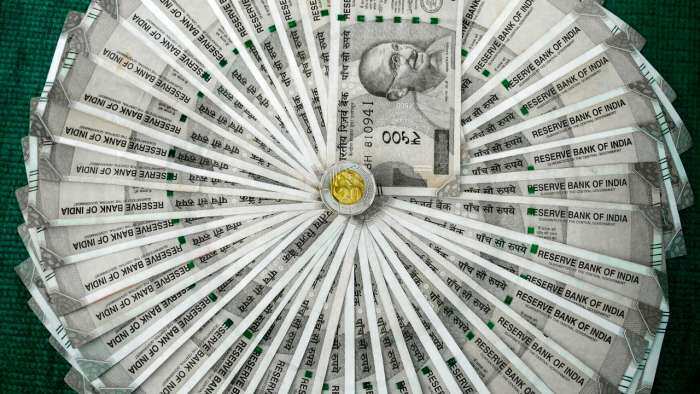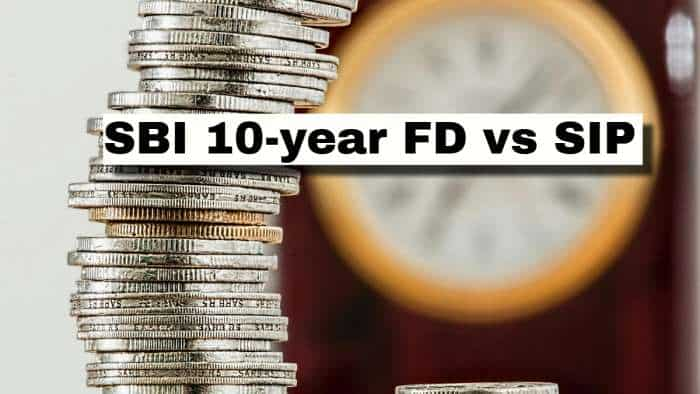RBI's Repo Rate: How a change in repo rate can impact your home loan EMI
RBI's Repo Rate: According to economists surveyed by Zee Business, the RBI is expected to keep the repo rate unchanged at 6.5 per cent in the current MPC meeting.
)
RBI's Repo Rate: As the Reserve Bank of India (RBI) is set to unveil the repo rate after the monetary policy meeting (MPC) on Friday, June 7, 2024, many will focus on home loan interest rates. Lenders change home loan interest rates when the RBI changes the repo rate. Since February 8, 2023, the central bank has kept the repo rate unchanged at 6.50 per cent. In the upcoming meeting, it is uncertain whether the rate will be changed or not. Let's decode the relation between the RBI's repo rate and home loan interest rates.
According to Atul Monga, CEO and Co-Founder of Basic Home Loan, a change in the RBI's repo rate directly impacts home loan EMIs. He further explained that the repo rate is directly proportional to loans, including home loans, meaning that whenever the central bank increases or decreases the rate, it similarly affects the loan or the EMIs.
Increased borrowing cost for banks: When the RBI raises the repo rate, it becomes costlier for banks to borrow money from the central bank.
Higher interest rates on home loans: To maintain their profit margins, banks typically pass on the increased borrowing costs to their customers. This translates into higher interest rates on new and existing home loans linked to the repo rate (floating rate loans).
Increased EMI burden: As the interest rate rises, the EMI amount for your home loan increases proportionally, which can put a strain on your monthly budget.
'Existing home loan borrowers with floating interest rates feel the impact immediately, while those with fixed rates experience changes only when their loan terms reset or upon refinancing,' he added. Therefore, the RBI’s repo rate adjustments are a crucial tool affecting housing affordability and loan repayment dynamics."
What if RBI cuts repo rate
If the RBI cuts the repo rate in an upcoming meeting then how it can be good for home loan borrowers:
Reduced borrowing costs for banks: A decrease in the repo rate makes it cheaper for banks to borrow from the RBI.
Lower interest rates on home loans: Banks react with reducing interest rates on home loans, making them more attractive to borrowers. This can lead to a decrease in existing EMIs for those with floating rate home loans.
Potential for increased loan demand: Lower interest rates can stimulate demand for home loans, as borrowing becomes more affordable.
The RBI maintained the repo rate at 6.5 per cent in the last monetary policy meeting, i.e., April 5, 2024. This indicates a period of relative stability in borrowing costs. However, it's essential to stay updated on future RBI decisions, as they can directly impact your home loan EMI.
Will RBI make any update or change in the repo rate?
According to economists surveyed by Zee Business, the RBI is expected to keep the repo rate unchanged at 6.5 per cent in the current MPC meeting.
Tips for the borrowers
Loan type selection: Choose a floating-rate loan if you anticipate future repo rate cuts for potentially lower EMIs. However, if you prefer stability, a fixed-rate loan might be a better option.
Track repo rate decisions: Keep yourself updated on the RBI's monetary policy decisions.
Refinancing options: If interest rates fall significantly, consider refinancing your existing home loan to potentially benefit from a lower EMI.
Get Latest Business News, Stock Market Updates and Videos; Check your tax outgo through Income Tax Calculator and save money through our Personal Finance coverage. Check Business Breaking News Live on Zee Business Twitter and Facebook. Subscribe on YouTube.
RECOMMENDED STORIES

LIC Saral Pension Plan: How to get Rs 64,000 annual pension on Rs 10 lakh one-time investment in this annuity scheme that everyone is talking about

Gratuity Calculation: What will be your gratuity on Rs 45,000 last-drawn basic salary for 6 years & 9 months of service?

Rs 1,500 Monthly SIP for 20 Years vs Rs 15,000 Monthly SIP for 5 Years: Know which one can give you higher returns in long term

Income Tax Calculations: What will be your tax liability if your salary is Rs 8.25 lakh, Rs 14.50 lakh, Rs 20.75 lakh, or Rs 26.10 lakh? See calculations

8th Pay Commission Pension Calculations: Can basic pension be more than Rs 2.75 lakh in new Pay Commission? See how it may be possible

SBI Revamped Gold Deposit Scheme: Do you keep your gold in bank locker? You can also earn interest on it through this SBI scheme

Monthly Pension Calculations: Is your basic pension Rs 26,000, Rs 38,000, or Rs 47,000? Know what can be your total pension as per latest DR rates
07:32 AM IST











 No interest rate cut in RBI's February policy review, or anytime in FY26: Axis Bank chief economist Neelkanth Mishra
No interest rate cut in RBI's February policy review, or anytime in FY26: Axis Bank chief economist Neelkanth Mishra RBI to keep repo rate unchanged at meeting next week, chances of rate cut in February increased: Report
RBI to keep repo rate unchanged at meeting next week, chances of rate cut in February increased: Report Dalal Street Week Ahead: Earnings, macro data, FII trends, global cues set to dictate market trend
Dalal Street Week Ahead: Earnings, macro data, FII trends, global cues set to dictate market trend RBI October MPC Review: No change in repo rate, stance revised to 'neutral', announces Shaktikanta Das
RBI October MPC Review: No change in repo rate, stance revised to 'neutral', announces Shaktikanta Das Dalal Street Week Ahead: RBI rate decision, TCS results, FII activity, global cues set to dictate market trend
Dalal Street Week Ahead: RBI rate decision, TCS results, FII activity, global cues set to dictate market trend